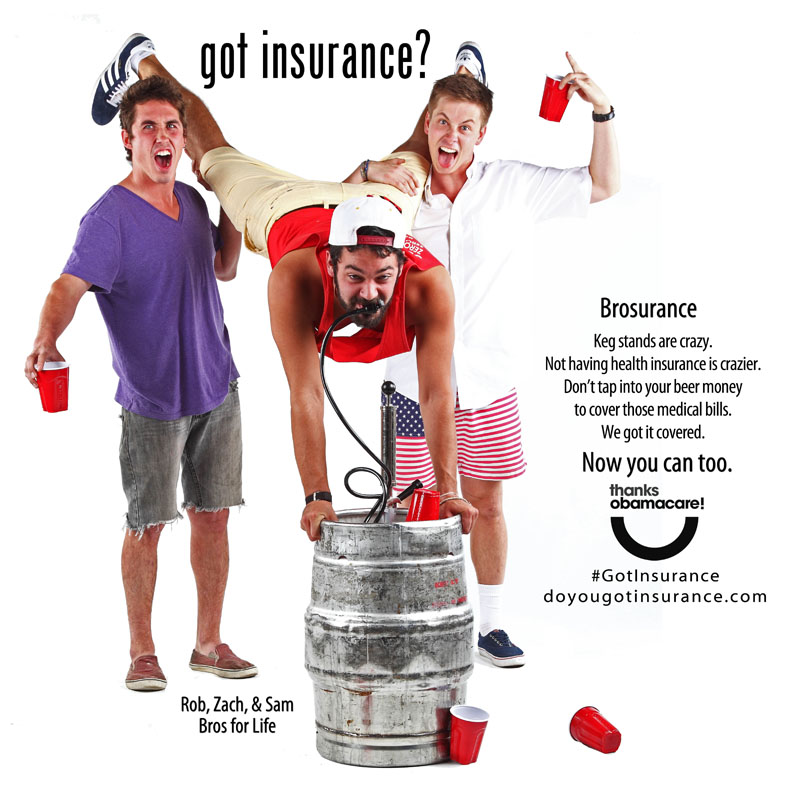Obamacare’s Special Enrollment Period Could Help Youth Signups
Resource type: News
The Washington Post | [ View Original Source (opens in new window) ]

Young adults, like these keg standers, could be more likely to qualify for Obamacare’s special enrollment periods. (Photo: doyougotinsurance.com)
By Jason Millman
Obamacare open enrollment may finally be over, but the opportunities to sign up for coverage aren’t. Some people may qualify for special enrollment periods during the year, and a new analysis from a youth advocacy group shows these enrollment windows may benefit young adults the most.
The open enrollment period finally officially ended on Tuesday, after the Obama administration had provided people extra time to sign up if they said they previously experienced enrollment problems. In a few states and Washington, D.C., that enrollment deadline has been further extended until the end of April.
The health-care law allows for special enrollment periods between open enrollment for people within 60 days of experiencing a certain life event, such as having a baby, getting married, losing insurance coverage, moving to a different coverage area, getting released from jail and others. An analysis from Young Invincibles, a group supporting the Affordable Care Act, points out why young adults — a demographic crucial to the law’s success — could benefit more from the special enrollment window. Reasons include:
- People ages 18 to 39 are twice as likely to be uninsured at some point during the year (34 percent) compared to those between 40-years-old and 64-years-old (17.9 percent), according to a 2009 Mathematica study.
- 83 percent of new mothers are between 18 and 34 years old, according to the CDC.
- An estimated 1.4 million marriages, mostly between young adults, will take place in the 7.5 months between April 1 and the Nov. 15 start of open enrollment.
- Adults ages 20 to 29 moved at twice the national rate between 2011 and 2012.
- About half of people leaving prison, based on 2012 data, are between 18 and 34.
The report outlines other special enrollment triggers, though not everyone will be eligible for the health insurance exchanges. For example, many of the young adults leaving prison, because of income, could qualify for Medicaid, which allows enrollment year-round.
A big question, though, is just how much awareness there will be of the special enrollment period. The major outreach effort focusing on young adults near the end of open enrollment in March has come to an end. We don’t have a final enrollment breakdown from HHS yet, but initial data from six states running their own insurance marketplaces showed just a modest bump in youth enrollment in March.
And while more people will become eligible for exchange coverage during thedow special enrollment win, some young adults already enrolled in exchanges will likely find coverage elsewhere during the same time. A report from California earlier this month found that about 20 percent of California exchange enrollees of all ages will likely get employer-sponsored coverage at some point this year, and another 20 percent would see their income drop to Medicaid eligibility levels.
Young Invincibles executive director Jen Mishory said her group is planning special enrollment outreach targeting college campuses and young mothers.
“We definitely don’t think the period to reach young people is over,” she said.
Young Invincibles is an Atlantic grantee via Center for Community Change.